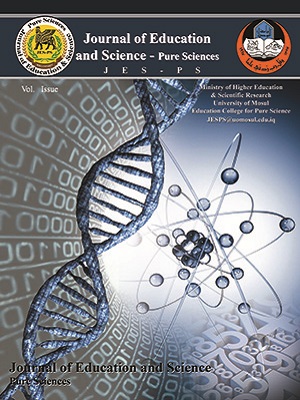Abstract
The present study carried out to investigate the injuries caused by
50KHz radiofrequency at 1200 V on the histological components of the
eye of Garra rufa fish. The exposure to the radiofrequency completed at
tow different temperature degree 20 ± 1 °C, 24 ± 1 °C subsequenthy, for
tow weeks and one month three hours daily. The results showed that the
radiofrequency caused injuries on the structure of the eye. The injuries
appeared at 20 ± 1 °C less than injuries at 24 ± 1 °C. On the other hand
the injuries more severe at one month than at two weeks.
The injuries that appeared at 20 ± 1 °C for two weeks includes:
Necrosis and damage of corneal epithelium and stroma, as well as,
necrosis and atrophy of annular ligament. The injuries of iris appeared as
coagulation of some blood vessels and destruction of others, as well as,
bleeding occurred and degeneration of pigment and cilliary cells. In the
lens necrosis and anterior cortical cataract appeared. The injuries of the
choroid and retina varied at central and peripheral regions of the eye
globe. In the central choroid region bleeding and hyperplasia in tapetum
lucidum appeared, as well as, destruction of blood vessels occurred. In
the central retina the Bruch's membrane destroyed and the pigment
epithelium necrositized with odema. The rods necrositized and
compacted as groups. On the other, hand the numbers of cones reduced
and its myoids pyknoted. The nuclear of outer nuclear layer also
pyknoted and odema, necrosis and swelling of inner nuclear layer
occurred.
تأثير التردد الراديوي KHz ،٥٠ مع درجات حرارة مختلفة، في التركيب النسجي لعين سمكة الكركور ...
٢
After one month of exposure at 20 ± 1 °C the injuries more severe
in all eye components, as well as, injuries variation appeared at central
and peripheral parts of eye globe. The injuries appeared at 24 ± 1 °C were
more wide than at 20 ± 1 °C. After two weeks necrosis and pyknosis
appeared in the corneal epithelium and stroma as well as pyknoted of
Bowman's membrane, atrophy and pyknosis of annular ligament also
appeared. The iris components reduced and coagulation, necrosis and
hyperplasia also appeared.
In the lens, destruction and anterior cataract occurred. The injuries
occurred in the all components of choroids and retina. The exposure for
one month caused wide injuries in the corneal, iris, lens,choroid and
retinal components. These injuries include damage of most corneal
components and atrophy of iris and complete cataract of the lens.
Variations in the injuries appeared at the central and peripheral region of
the choroids. These injuries was wide damage of choroidal components.
On the other hand, the retinal pigment epithelium completely damaged.
The rods mostly damaged and the cones compacted, pyknoted and
appeared very thin. The outer nuclear layer damaged and reduced. The
other layers: Outer plexiform, ganglion cells, nerve fibers and optic nerve
pycnoted and odema appeaed in the optic nerve. Some of the blood
vessels in the choroids showed neoevascularization and some destroyed.
The peripheral retina showed destruction of pigment epithelium and the
most of the rods damaged and the cones reduced in number with damaged
of many of them. The outer nuclear layer pyknositized and its rows
redusced.
